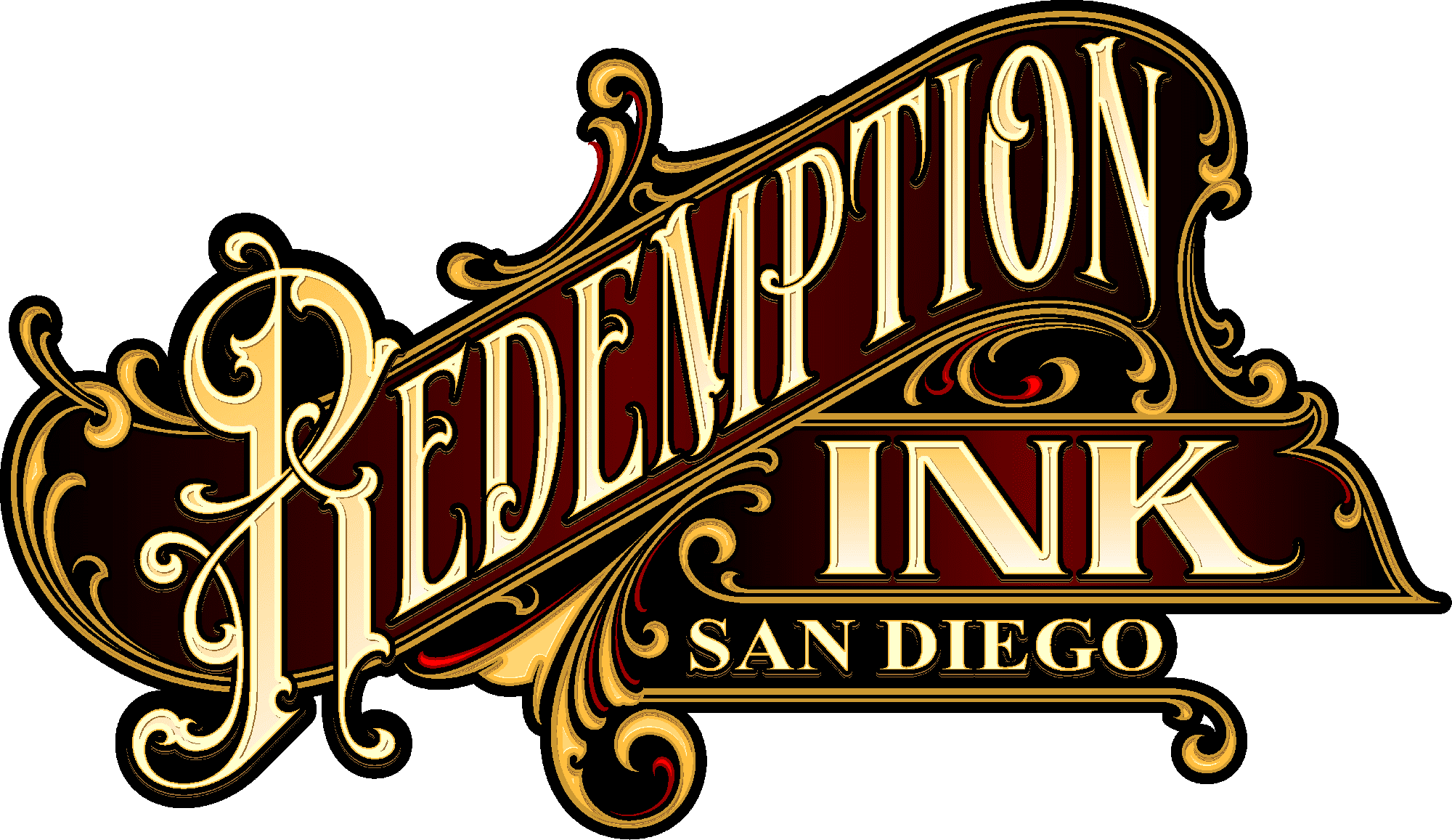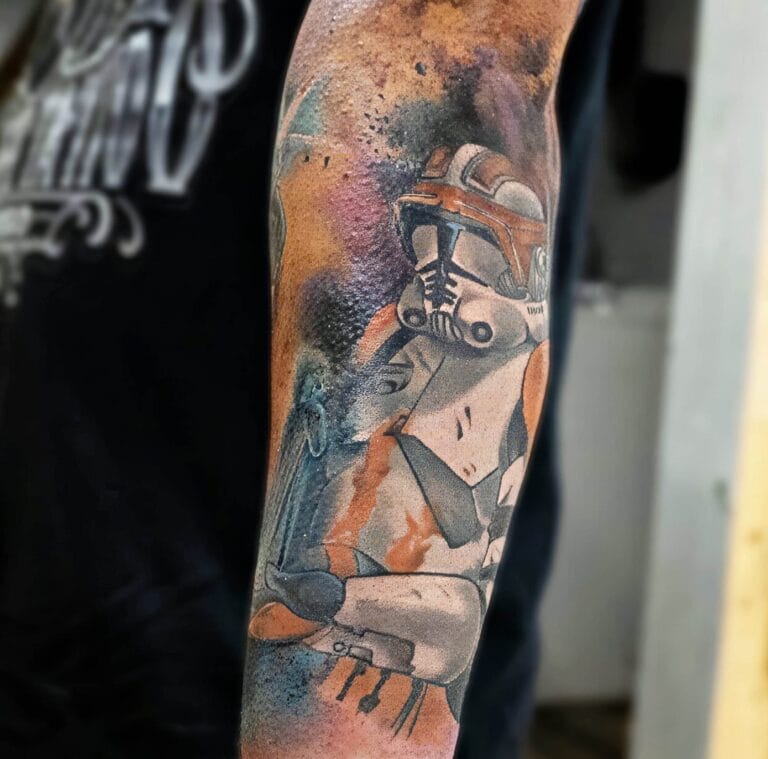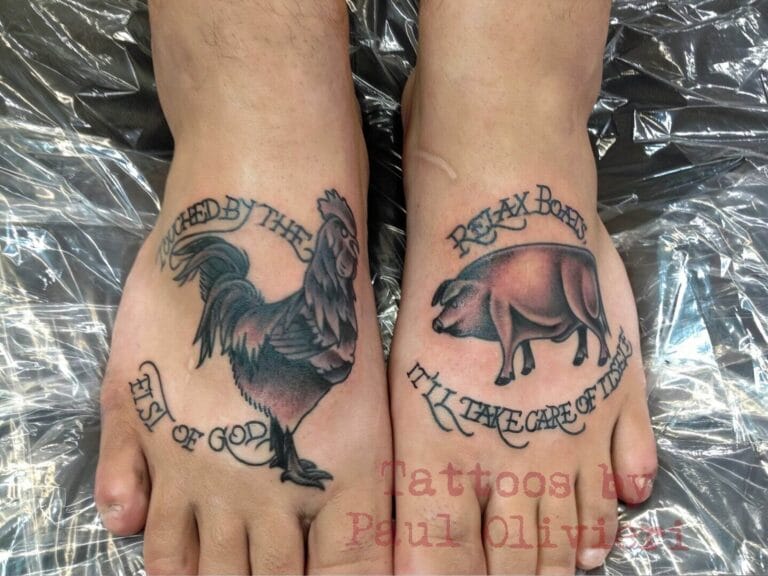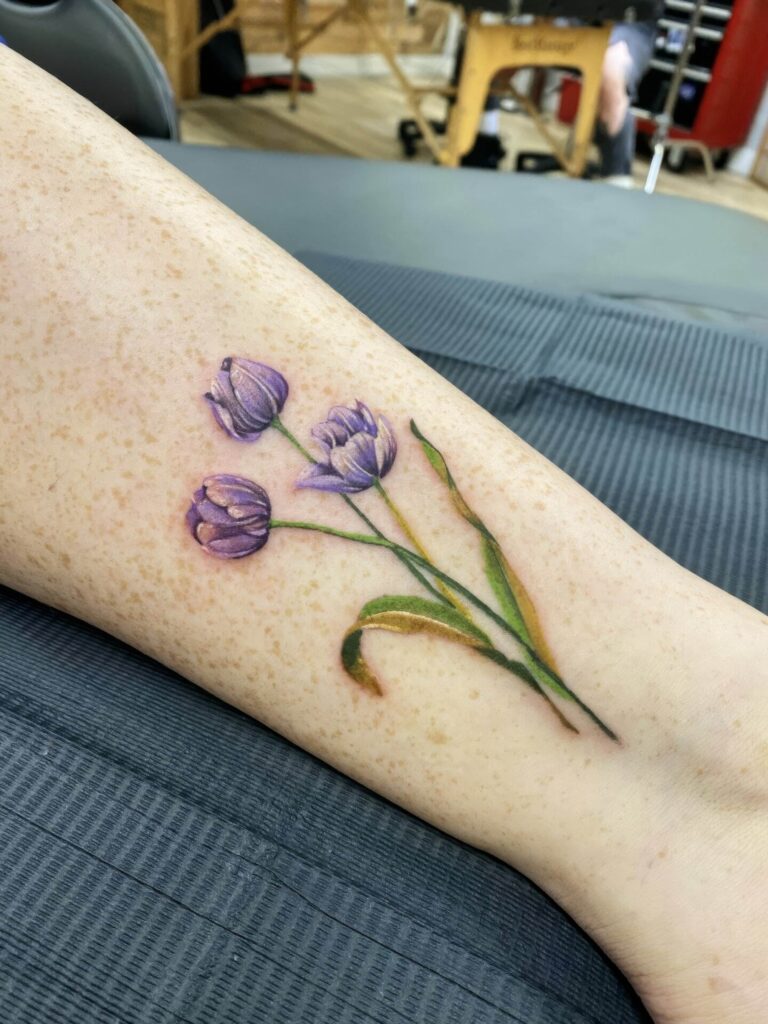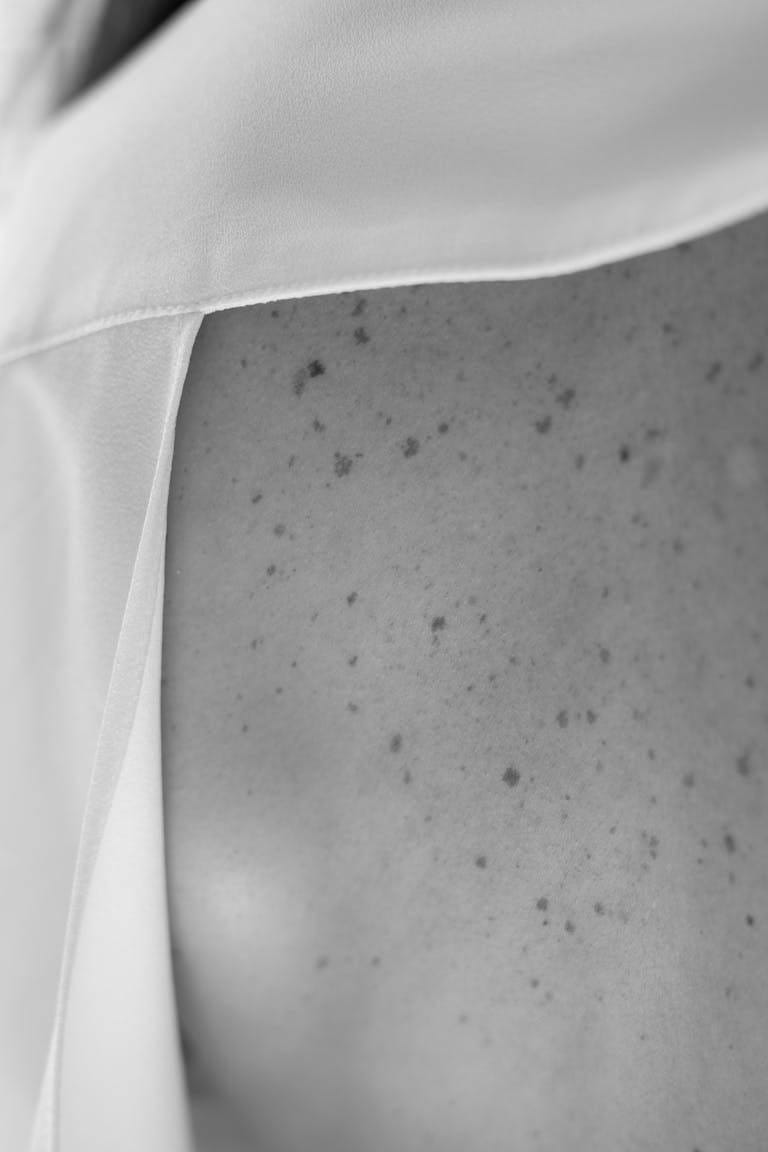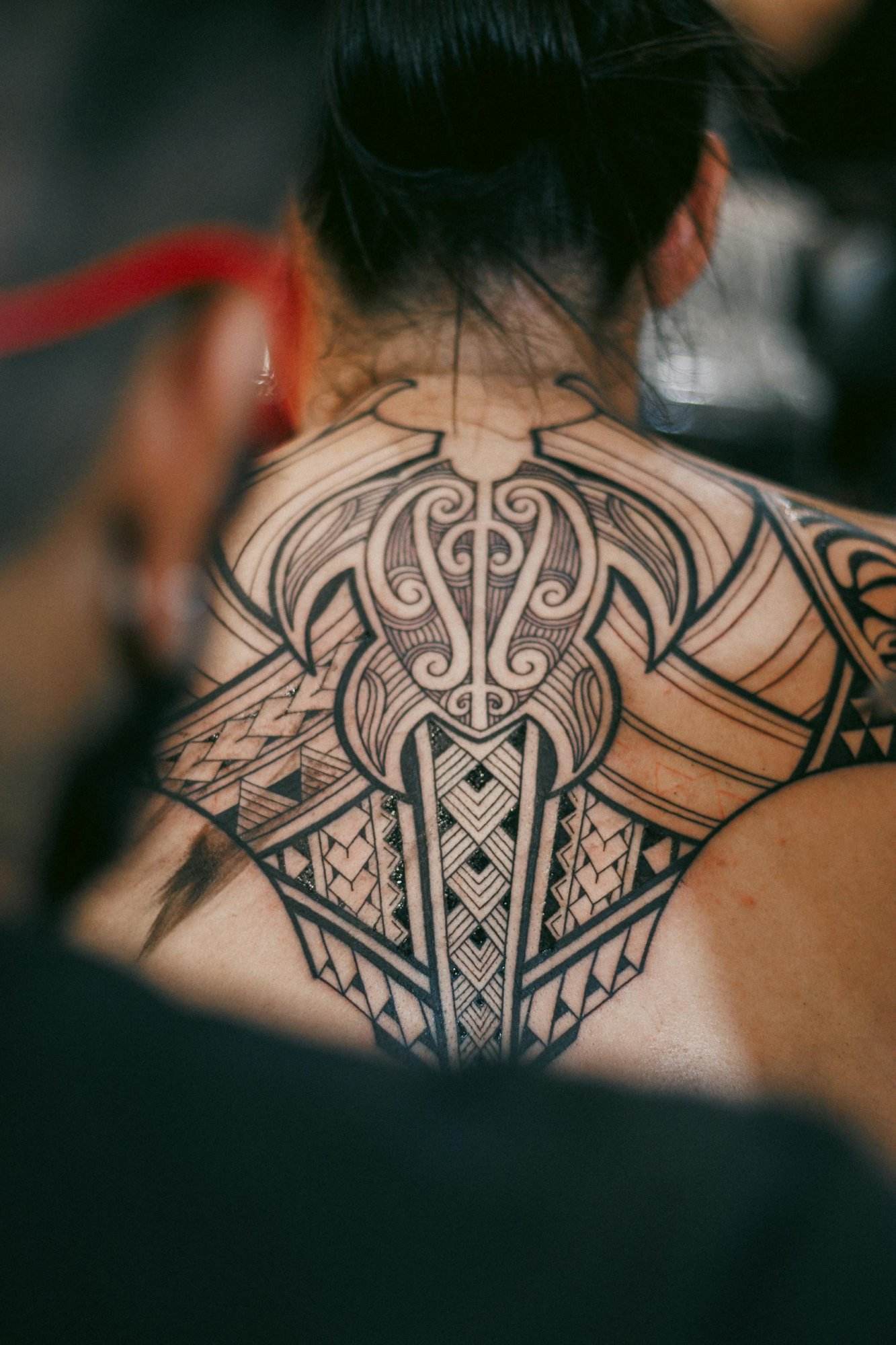
When considering a tattoo, one of the most crucial factors to evaluate is the experience of the tattoo artist. An artist’s background can significantly influence the quality and outcome of your tattoo. Many artists undergo extensive training, often starting as apprentices in established studios, where they learn the intricacies of tattooing techniques, hygiene practices, and customer interaction.
Their experience can range from years of practice to specialized training in particular styles, such as realism, traditional, or abstract art. Understanding an artist’s journey can provide insight into their skill level and artistic vision, which is essential for achieving the desired result. Moreover, an experienced tattoo artist often has a portfolio showcasing their previous work.
This collection serves as a testament to their capabilities and style. By reviewing their portfolio, potential clients can gauge whether the artist’s aesthetic aligns with their vision. Additionally, seasoned artists are typically more adept at handling various skin types and conditions, which can be crucial for ensuring a successful tattoo application.
Engaging in a conversation about their experience can also reveal their approach to challenges that may arise during the tattooing process, further solidifying your confidence in their abilities.
Key Takeaways
- Understanding the tattoo artist’s experience is crucial for a successful collaboration
- Clarifying the design and placement of the tattoo ensures that both the artist and client are on the same page
- Discussing tattoo aftercare is important for the healing and longevity of the tattoo
- Exploring tattoo pricing and payment options helps avoid misunderstandings and surprises
- Addressing health and safety concerns is essential for a safe and hygienic tattoo experience
Clarifying the Design and Placement
Once you have selected a tattoo artist, the next step is to clarify your design and its placement on your body. This stage is vital as it sets the foundation for your tattoo experience. It is essential to communicate your ideas clearly, whether you have a specific design in mind or are seeking inspiration from the artist.
Discussing elements such as size, color, and style can help ensure that both you and the artist are on the same page. A collaborative approach often leads to a more personalized and satisfying outcome. Placement is equally important and can significantly affect how the tattoo looks and feels over time.
Different areas of the body have varying levels of sensitivity and visibility, which can influence your decision. For instance, tattoos on the forearm may be more visible and subject to sun exposure than those on the back or thigh. Additionally, certain placements may require more intricate designs due to the contours of the body.
Engaging in a thoughtful discussion about placement allows you to consider factors such as personal significance, visibility, and comfort during the tattooing process.
Discussing Tattoo Aftercare
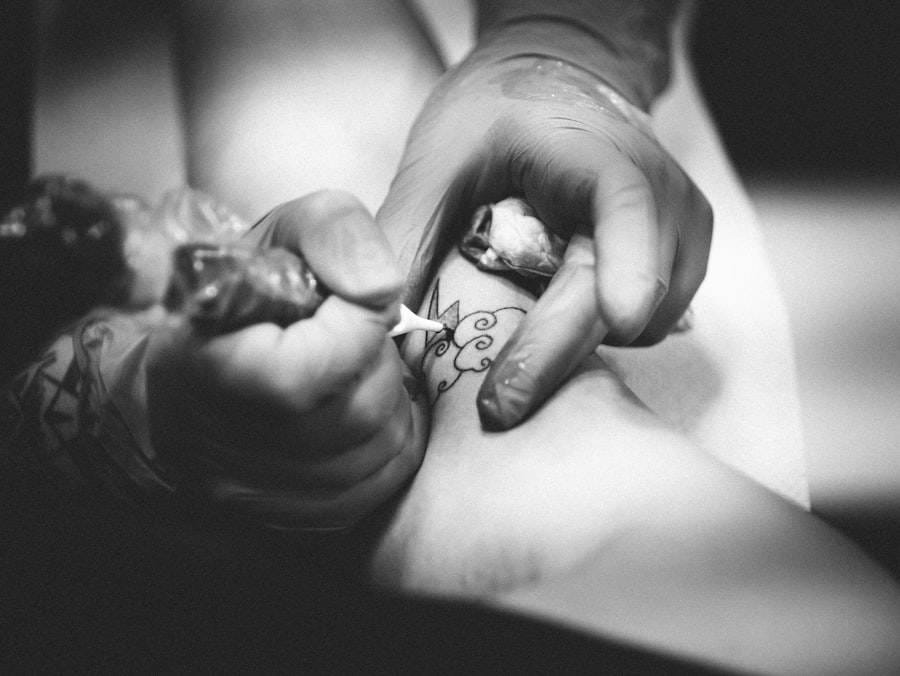
Aftercare is a critical aspect of the tattoo process that should not be overlooked. Proper aftercare ensures that your tattoo heals correctly and maintains its vibrancy over time. Most artists will provide specific instructions tailored to your tattoo’s size, location, and ink type.
These guidelines typically include keeping the tattoo clean, applying ointments or moisturizers, and avoiding sun exposure or soaking in water for an extended period. Understanding these instructions is essential for preventing infections and ensuring optimal healing. Moreover, discussing aftercare with your artist allows you to address any concerns or questions you may have about the healing process.
Some individuals may experience different reactions to tattoos based on their skin type or health conditions. By openly communicating with your artist about your skin’s sensitivity or any allergies, you can receive personalized advice that caters to your needs. This proactive approach not only fosters a better healing experience but also strengthens the relationship between you and your artist.
Exploring Tattoo Pricing and Payment
Tattoo pricing can vary widely based on several factors, including the artist’s experience, the complexity of the design, and the time required to complete the piece. It is essential to have an open discussion about pricing before committing to a tattoo. Many artists charge by the hour, while others may offer flat rates for specific designs or sizes.
Understanding how pricing works can help you budget accordingly and avoid any surprises on the day of your appointment. Additionally, discussing payment methods is crucial for ensuring a smooth transaction. Some artists may require a deposit to secure your appointment, which is often deducted from the final cost of the tattoo.
Knowing what forms of payment are accepted—whether cash, credit cards, or digital payment options—can help streamline the process. Being transparent about pricing and payment expectations fosters trust between you and your artist, allowing you to focus on creating a meaningful piece of art without financial stress.
Addressing Health and Safety Concerns
Health and safety should always be a priority when getting a tattoo. It is essential to inquire about the studio’s hygiene practices and protocols to ensure a safe environment. Reputable tattoo artists adhere to strict sanitation guidelines, including using sterilized equipment, disposable needles, and maintaining a clean workspace.
Discussing these practices with your artist can provide peace of mind and demonstrate their commitment to client safety. Furthermore, it is important to communicate any pre-existing health conditions or allergies that may affect your tattoo experience. Certain medical conditions may require special considerations during the tattooing process or healing phase.
By being upfront about your health history, you enable your artist to tailor their approach accordingly, ensuring that both your safety and satisfaction are prioritized throughout the experience.
Inquiring About the Tattoo Process

Understanding the tattoo process itself can alleviate anxiety and set realistic expectations for first-timers or those unfamiliar with how tattoos are applied. The process typically begins with a consultation where you discuss your design and placement with the artist. Once everything is agreed upon, the artist will prepare by setting up their equipment and ensuring that all materials are sterile.
During the actual tattooing process, it is common for clients to feel a range of sensations from mild discomfort to pain depending on their pain tolerance and the area being tattooed. It’s beneficial to ask your artist about what to expect in terms of sensation and duration so that you can mentally prepare yourself for the experience. Additionally, understanding how long each session will take can help you plan accordingly, especially if multiple sessions are required for larger pieces.
Communicating Expectations and Preferences
Effective communication with your tattoo artist is key to achieving a satisfactory outcome. Clearly expressing your expectations regarding design details, color choices, and overall style can help ensure that your vision is accurately translated onto your skin. Artists appreciate when clients come prepared with references or examples that illustrate their preferences; this collaborative effort often leads to a more successful result.
Moreover, discussing any specific preferences regarding shading techniques or line work can further refine your design. Artists often have unique styles that may influence how they interpret your ideas; therefore, being open about what you like or dislike can help bridge any gaps in understanding. Establishing this level of communication fosters a positive working relationship between you and your artist, ultimately enhancing your overall tattoo experience.
Seeking Clarification on Touch-Up Policies
Aftercare is crucial for maintaining a tattoo’s appearance over time; however, some clients may find that touch-ups are necessary after healing due to fading or other factors. It’s important to inquire about your artist’s touch-up policies before getting inked. Many artists offer complimentary touch-ups within a certain timeframe after the initial session; understanding these policies can help you plan for any potential adjustments needed in the future.
Additionally, discussing what constitutes a touch-up versus regular maintenance can clarify expectations moving forward. Some tattoos may require more frequent touch-ups based on factors such as location on the body or skin type. By addressing these concerns upfront, you can ensure that both you and your artist are aligned on what to expect post-tattooing, allowing for a smoother transition into enjoying your new artwork without lingering uncertainties.
In conclusion, embarking on a tattoo journey involves careful consideration of various factors that contribute to a successful outcome. From understanding an artist’s experience to clarifying design details and discussing aftercare protocols, each step plays a vital role in ensuring satisfaction with your chosen piece of art. Open communication about pricing, health concerns, and touch-up policies further enhances this experience by fostering trust between you and your artist.
By taking these elements into account, you can approach your tattoo appointment with confidence and excitement for what lies ahead.
FAQs
What should I bring to my tattoo consultation?
It’s a good idea to bring any reference images or ideas you have for your tattoo, as well as any questions you may have for the artist. You may also want to bring a form of ID and any necessary paperwork or forms provided by the tattoo studio.
What questions should I ask during my tattoo consultation?
Some important questions to ask during your tattoo consultation include the artist’s experience and qualifications, their process for creating custom designs, their approach to hygiene and safety, the estimated cost and time required for the tattoo, and any aftercare instructions.
How can I ensure that the tattoo artist understands my vision for the tattoo?
Bringing reference images, being clear and specific about your ideas, and asking the artist about their process for creating custom designs can help ensure that the artist understands and can bring your vision to life.
What should I look for in a tattoo artist during the consultation?
During the consultation, it’s important to look for a tattoo artist who is attentive, knowledgeable, and has a portfolio that reflects the style of tattoo you are looking to get. Additionally, pay attention to the cleanliness and professionalism of the studio.
What are some important considerations for choosing a tattoo design during the consultation?
When choosing a tattoo design during the consultation, it’s important to consider factors such as the size and placement of the tattoo, how it will complement your body, and how it will age over time. It’s also important to discuss any potential modifications or adjustments to the design.
